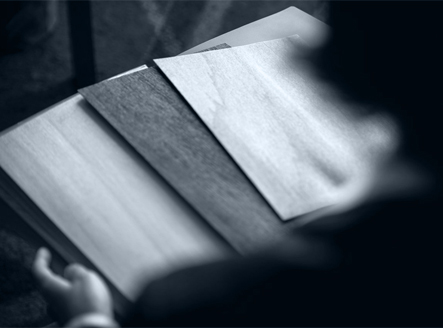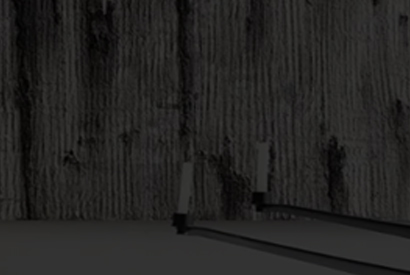Process analysis:
The core feature of frosted decorative board comes from its frosted texture surface, which is formed by a series of surface treatment processes, common methods include mechanical grinding, chemical etching or sandblasting. During the treatment process, the original smooth surface is polished or corroded to produce a uniform and fine granular texture, giving it a soft luster and low reflectivity, effectively improving the overall texture and comfort of the space.
In some high-end applications, frosted treatment is also combined with hot pressing molding process. During the hot pressing process, the temperature, pressure and time are precisely controlled to ensure that the texture is evenly distributed and firmly attached to the surface of the substrate, which not only enhances the flatness and firmness of the board, but also further stabilizes the frosted layer and extends the service life of the product.
Design concept:
The design principle of frosted decorative board emphasizes the dual experience of vision and touch. Its delicate surface texture not only reduces light reflection and avoids strong light interference, but also creates a hazy and gentle atmosphere. For this reason, it has become an indispensable visual element in decorative styles such as minimalism, Nordic style, and modern light luxury.
Compared with the cold texture brought by traditional high-gloss materials, frosted panels are more low-key and subtle. They can be matched with various color systems and materials to soften the atmosphere of the space, making the entire environment more inclusive and friendly. They are especially suitable for bedrooms, study rooms, living rooms and other spaces that need to create a "sense of tranquility".
Material structure:
In terms of material selection, frosted decorative panels are not limited to a single material. Their structure can be a single-layer plate or a multi-layer composite structure. Common raw materials currently include:
Glass: used for doors, windows, display cabinets, partitions, etc., with excellent light transmittance and decorative properties;
Plastics (such as acrylic, PVC): light and easy to process, suitable for various creative custom scenes;
Metals (such as aluminum plates, stainless steel plates): used for industrial style decoration to enhance the sense of technology in the space;
Wood (such as density boards, plywood): mostly used in furniture, background walls, cabinet doors and other parts.
Different materials can be flexibly selected according to actual usage scenarios to meet consumers' multiple needs for performance and appearance.
Product features:
Frosted decorative panels not only have excellent decorative effects, but also have significant advantages in practicality:
Anti-fingerprint and anti-scratch: The frosted surface can effectively hide minor scratches, dust and fingerprints, and extend the service life;
Anti-reflective and anti-glare: Reduce light pollution, improve visual fatigue, and are suitable for public areas or office environments;
Delicate touch, non-slip and wear-resistant: Soft touch, not easy to slip, suitable for desktops, floor cabinets, operating panels, etc.;
Environmental protection and safety: Most frosted materials can meet environmental certification standards and are suitable for home decoration and commercial projects with high health requirements.
These characteristics make frosted decorative panels stand out in modern homes that pursue high quality, comfort and personalization.
Application areas:
Frosted decorative panels have been widely used in many fields. Their soft texture and practical performance make them well adaptable in homes, businesses, industries and public spaces. Specific applications include:
In the field of furniture decoration, frosted decorative panels are often used in wardrobe door panels, desk desktops, coffee table panels, and TV background walls, which not only enhance the overall aesthetics, but also enhance the surface's wear resistance and durability.
In building door and window systems, they are widely used in frosted glass partitions, balcony sliding doors, and office glass doors and windows, which not only ensure lighting, but also enhance privacy and space texture.
In commercial spaces, they are commonly found in retail showcases, brand background walls, LOGO display areas, and cash register facades, helping to create a unified and recognizable brand image.
In the field of industry and technology, frosted panels are used for instrument panels, anti-static housings, and industrial equipment cover panels, which not only meet functional requirements, but also enhance the overall visual effect of the product.
In public places such as hospitals, airports, schools, libraries, etc., frosted decorative panels are often used for wall decoration or functional partitions, ensuring safety while taking into account visual comfort and design unity.
Especially in homes and commercial retail spaces, frosted decorative panels can cleverly enhance the overall quality of the space and achieve a perfect fusion of decoration and functionality.

 中文简体
中文简体





